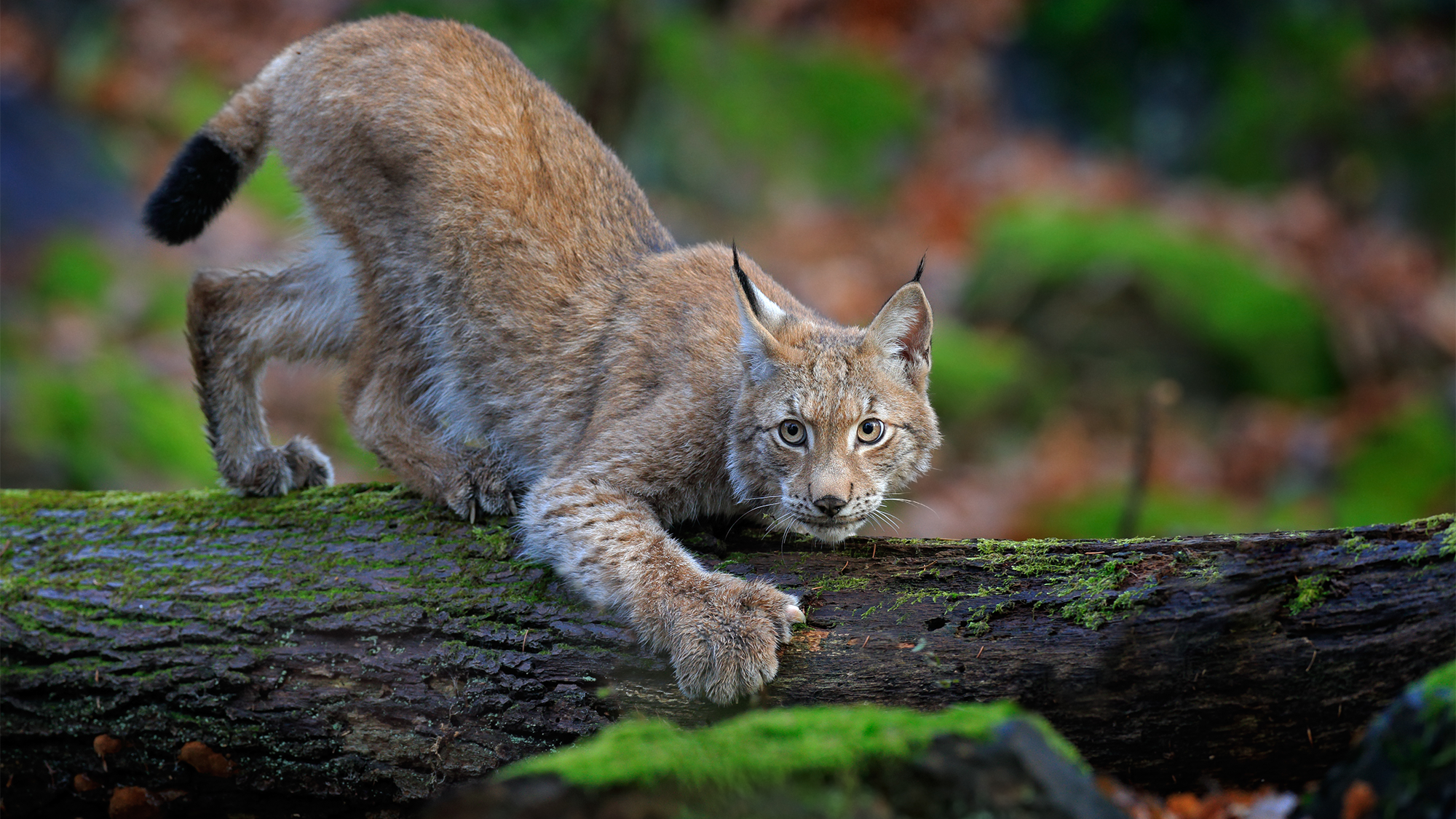

Conservationists in Europe are warning that a population of Eurasian lynx will disappear from France if action is not taken. These elusive wildcats live in the Jura Mountains, a mountain range in eastern France on the border with Switzerland.
After disappearing entirely from France in the 18th century, the wildcats were reintroduced to Switzerland during the 1970s and lynxes moved across the border into France by the end of the decade. A genetic study published February 13 in the journal Frontiers in Conservation Science finds that this population needs help and could go extinct within three decades.
[Related: Living with a lynx—for science.]
“Given the rapid loss of genetic diversity, we estimate that this population will go extinct in less than 30 years,” said co-author Nathan Huvier from the Centre Athenas, in a statement. “This population urgently needs new genetic material to become sustainable.”
Not much is known about this population of lynxes. Scientists estimate that it contains a maximum of 150 adults and is poorly connected to the larger and healthier populations that live in Germany and Switzerland. The population is also not growing to a sustainable size.
The team believes that its population growth has been suppressed by poaching, automobile accidents, and inbreeding depression. Inbreeding depression occurs when insufficient genetic diversity in a population leads to problems with reproduction and survival.
“As there is a lack of genetic monitoring of the lynx in France and we consider that crucial for species conservation, we took the lead and did this work,” said Huvier.
From 2008 to 2020, the team collected genetic samples to try and determine the genetic health of the population. They took samples from lynxes that were dead, injured, or orphaned to keep from stressing the healthy animals in an already precarious population.
“For us, this method is more ethical as there is no capture and thus stress induced for DNA sampling only,” explained Huvier.
They compared the genetic samples to references that came from the parent population of lynxes from the Carpathian Mountains in Central and Eastern Europe. The team determined that while the size of the French population of lynxes is believed to be between 120 to 150 individuals, the population of healthy breeding wildcats is only 38 wildcats. However, the team cautions that 38 is likely an overestimate, so the number may be even lower.
[Related: The curious case of an endangered wildcat and a disappearing fruit tree.]
What they found to be more alarming is that the inbreeding coefficient–a measure of how likely it is that two mating individuals from the same population are closely related– is very high. They found a 41 percent chance that two mates were closely related and that new genetic material is urgently needed to prevent population collapse.
To help save these lynxes, the team suggests using road signs that raise awareness of the presence of lynxes to encourage drivers to remain cautious and more strict enforcement of poaching laws. Replacement of poached lynxes with animals from genetically healthier populations and exchanging orphaned cubs between rescue centers would also help rescue this population from genetic collapse.
“We want this work to support action for lynx conservation,” said Huvier. “Reintroduction, replacement of poached lynxes, and exchange of orphan lynxes between care centers are the best short-term solution for this population to remain alive, and it will give it a chance to develop and connect with other populations in Europe.”
